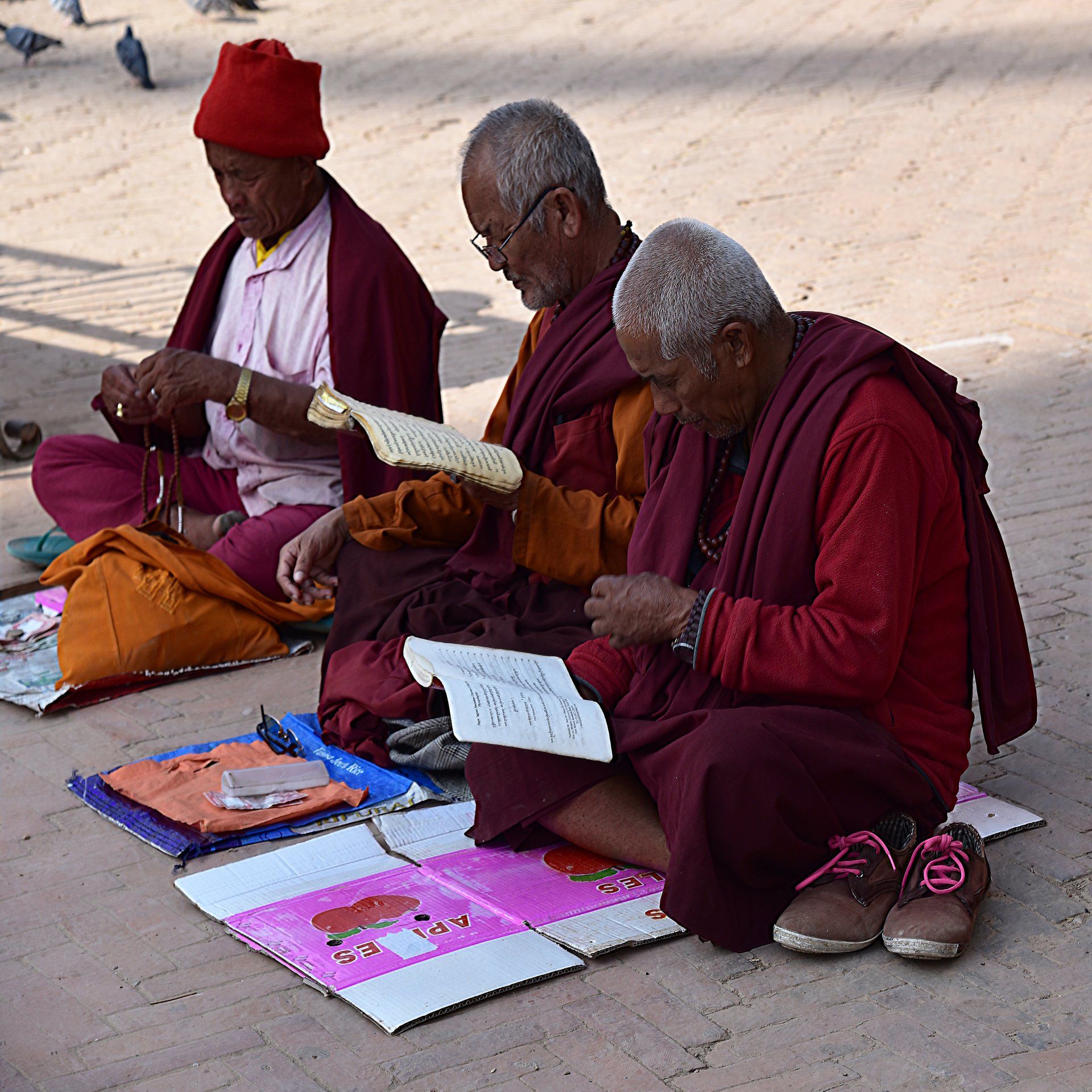An adventure of a lifetime
A Mystical And Spiritual Journey
Embarking on a mystical and spiritual journey through India, Nepal, and Laos is a transformative experience that unveils the rich tapestry of religions and ancient traditions that have thrived in these lands for millennia. These countries are home to some of the most revered and sacred sites, where seekers can find solace, enlightenment, and a profound connection with their inner selves. India, known as the birthplace of several major religions, is a spiritual haven. In Varanasi, situated on the banks of the holy Ganges River, the cycle of life and death is vividly apparent. Pilgrims and travelers alike flock to the ghats, where ancient rituals and ceremonies are performed with utmost devotion. The experience of witnessing the mesmerizing Ganga Aarti, where priests offer prayers to the river, is both humbling and awe-inspiring. Bodh Gaya, in Bihar, is another significant destination for spiritual seekers. It is here, under the Bodhi Tree, that Siddhartha Gautama attained enlightenment and became the Buddha. The Mahabodhi Temple, with its intricate carvings and serene ambiance, serves as a powerful reminder of the path to spiritual awakening. Nepal, nestled in the Himalayas, is not only a paradise for trekkers but also a sanctuary for spiritual exploration. Pashupatinath, located in Kathmandu, is one of the holiest Hindu temples dedicated to Lord Shiva. The temple's sacred surroundings, along with the presence of sadhus and devotees, create an atmosphere of devotion and contemplation. Lumbini, identified as the birthplace of Lord Buddha, holds immense significance for Buddhists worldwide. The Maya Devi Temple, enclosing the exact spot of Buddha's birth, evokes a sense of serenity and introspection. In Laos, a land infused with Theravada Buddhism, the ancient city of Luang Prabang is home to Wat Xieng Thong, a masterpiece of Lao temple architecture. Its golden spires and intricate mosaics reflect the country's deep spiritual heritage. Pha That Luang, a grand stupa in Vientiane, symbolizes Buddhism's enduring presence in Laos and serves as a focal point for both religious ceremonies and cultural celebrations. Throughout this journey, one can encounter diverse spiritual practices, engage in meditation and yoga, and partake in conversations with wise sages and spiritual practitioners. The collective energy of these sacred places nurtures the mind, body, and soul, inspiring a sense of interconnectedness with the universe.
India
Amarnath Cave Kashmir
This Hindu Shrine is dedicated to Lord Shiva and is said to be over 5,000 years old. Inside the cave is an ice stalagmite which looks like a Shiva Linga. 400,00 Hindu devotes visit Amarnath Cave during the festival of Shravani Mela in July and August.
Bodh Gaya
In the state of Bihar in north eastern India Bodh Gaya is a UNESCO World Heritage Site where Lord Buddha attained enlightenment under the sacred Bodhi Tree around 2600 years ago. The Mahabodhi temple, known as “The Great Awakening Temple", is on the spot where Buddha attained enlightenment and dates from the 5th or 6th centuries.
Varanasi
A city that sits on the banks of the river Ganges in Uttar Pradesh and is the holiest of the seven sacred cities in india. There are 88 ghats, which are steps beside the river Ganges, and are used for rituals. Two of these ghats are solely cremation areas. To be cremated here is believed In Hinduism it is believed that to be cremated here means you will break the cycle of reincarnation.
The Golden Temple, Amritsar
This is the Sikhs’ most important pilgrimage site, The temple was build around the 16th century and was designed by Guru Arjan. It is covered in a gold foil and sits on a small island in the centre of the pool, called the Amrita Saras, “Pool of Nectar”. A great time to go is during Diwali, the Festival of Light.
The Konark Sun Temple in Puri
A 13th century Hindu temple dedicated to the Sun God, Surya . Shaped like a giant chariot, the temple is known for its stone carvings that cover the entire Temple. There are three images of the Sun God at three different sides of the temple, positioned in the exact direction to catch the rays of the sun at morning, noon and evening.
Meenakshi Temple Madura
A Hindu Temple dedicated to Meenakshi, a form of the Goddess Parvati, and to her husband Lord Shiva. The Temple dates back as far as 2,500 years, built in a vast complex and covers 14 acres. There are 4,500 pillars,14 towers and four main towers at each entrance which face north, east, south, and west. This is the holiest Hindu site in South India.
Nepal
Pashupatinath Temple
Dedicated to Lord Shiva this is one of the most important Hindu Temples in Nepal. There are 492 temples on this site, including 15 shrines to Lord Shiva and 12 phallic shrines. It is said there has been a temple here since 400 B.C. The Pashupatinath Temple sits next to the Bagmati River which is regarded as holy by both Hindu’s and Buddhist’s. This is the Ghats and is a cremation site for Hindu’s.
Mayadevi Temple in Lumbini
The the birth place of The Buddha born in 623 B.C. The Mayadevi Temple dates back 2,200 years. A cutting from the Bodhi tree in the gardens is believed to be from the tree in Bodhi Gaya, India under which Buddha was enlightened. There are thirty two Buddhist monasteries on this monastic site from all around the world. This is one of the most important Buddhist site in the world
Muktinath Temple
A Temple dedicated to Lord Vishnu and Chenrezig and sacred to both Hindus and Buddhists. The Temple was built in 1815 and located in Muktinath Valley at an altitude of 3,710 meters. In the outer courtyard Devotes take a holy bath by walking under 108 bull faces pouring out ice cold water which runs from the Gandaki River which is believed to wash away negative Karma.
Janaki Mandir Temple
A Temple in Janakpur dedicated to the Hindu Goddess, Sita built by King Janak in 1910Ad and made entirely of stone and marble. It is believed to be the Birthplace of Goddess Sita. Both her and her husband, Lord Rama are worshipped here by Hindus.
Boudhanath Stupa
Locally known as Boudha is situated about 8m north-east of Kathmandu centre. It is the holiest Buddhist Tibetan temple outside of Tibet. This giant Stupa stands 36m high and is approximately 100m in diameter. There has been a stupa on this site since around 600AD. There are at least 29 Tibetan Gompas (Monasteries & Nunneries) around Boudhanath. An estimated 300 Buddhist monks and Nunn's from all different sects of Buddhism live here.
Manakamana Temple
Built around the 17th century and located 12 kilometres from Gorkha town, this sacred place is dedicated to the Hindu Goddess, Bhagwati, an incarnation of Parvati. Manakamana - “mana” means heart and “kamana” means wish. It is believed that the the Goddess grants wishes when prayed to.
Laos
Pha That Luang
A Buddhist stupa located in Vientiane, Laos. Believed to date back to the 3rd century, it has been rebuilt and renovated several times. It is an iconic symbol of Laos, representing both Buddhism and Lao sovereignty.
Haw Phra Kaew
Located in Vientiane, Laos, is a historic Buddhist temple. Originally built in the 16th century, it once housed the revered Emerald Buddha, now located in Bangkok. The temple's exquisite architecture and ornate decorations make it a significant cultural and religious site in the city.
Wat Xieng Thong
Located in Luang Prabang, Laos, was constructed in 1560. It served as the coronation site for Lao kings and played a vital role in royal ceremonies. Throughout its history, the temple survived wars and invasions, showcasing traditional Lao architecture. Today, it stands as a testament to the rich cultural heritage of Laos.
Wat Phou
A UNESCO World Heritage site in Laos. This ancient Khmer temple complex dates back to the 5th century and showcases remarkable architectural and religious significance. Nestled amidst lush mountains, it offers breathtaking views and is a pilgrimage site for Buddhists. A must-visit for history and nature enthusiasts.
Pak Ou Caves
Dating back several centuries. They have served as a sacred site for the local population, with the first statues being placed there in the 16th century. Over time, the caves became a repository for countless Buddha images donated by pilgrims, becoming an important spiritual and cultural landmark in Laos.
Wat Wisunarat
also known as Wat Visoun or Visounnarath, was built in 1513 by King Wisunarat during the reign of the Lan Xang Kingdom. It suffered damage over the years due to invasions and natural disasters but was restored. The temple holds great historical and cultural significance, showcasing the rich heritage of Luang Prabang.





















